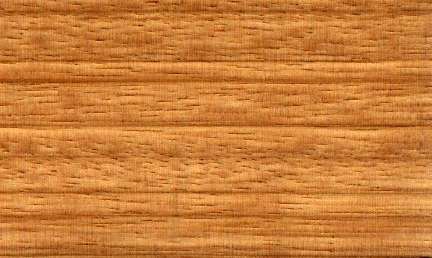
Bomanga (Brachystegia zenkeri)
Family: Leguminosae
Common names: Akolodo, Ariella, Bomanga, Ekop evene, Ekop leke, Manga, Meblo, Mendou, Naga, Ngu, Nzang, Okwen, Yegna
Distributed in: Benin, Cameroon, Gabon, Gambia, Ghana, Guinea Bissau, Guinea, Ivory Coast, Nigeria, Senegal, Sierra Leone, Togo, Zaire (Africa)
Distribution overview: West Africa.
Common uses: Chairs, Chests, Concealed parts (Furniture), Cooperages, Core Stock, Decorative plywood, Decorative veneer, Desks, Dining-room furniture, Domestic flooring, Dowell pins, Dowells, Drawer sides, Excelsior, Figured veneer, Fine furniture, Floor lamps, Flooring, Furniture , Furniture components, Furniture squares or stock, Hatracks, Joinery, Kitchen cabinets, Living-room suites, Office furniture, Parquet flooring, Plain veneer, Plywood, Radio - stereo - TV cabinets, Rustic furniture, Stools, Sub-flooring, Tables , Utility furniture, Veneer, Wardrobes
Product sources: The ITTO reports that timber from this species is produced occasionally. The material is being promoted on the export market.
Environment profile: Very little threat to its natural environment.
Colors: the heart isRed, Yellowish brownand the sapwoodColor not distinct from heartwood, Pale yellowish brown.The grain isStraight, the textureMedium coarse to coarseand the lusterLustrous
Natural durability: Sapwood susceptible to attack by powder post beetles, Very low natural resistance to decay fungi
Odor: No specific smell or taste
Kiln Schedules: T6 - D2 (4/4) US
Drying Defects: Expect resin/gum exudation, Severe surface checking
Ease of Drying: Thick Stock Requires Care
Comments: Abnormal Wood Tissue Some authorities identify this species and B. zenkeri as the same, i.e., B. laurentii = B. zenkeri . Tension wood may be present. Material containing tension wood is highly prone to distortion during drying
Blunting Effect: Moderate
Boring: Fairly difficult to very difficult
Carving: Fairly Difficult to Very Difficult
Cutting Resistance: Fairly Difficult to Very Difficult to saw
Gluing: Very good properties
Mortising: Fairly Difficult to Very Difficult
Moulding: Fairly Difficult to Very Difficult
Oulding properties are good
Movement in Service: Fairly Difficult to Very Difficult
Oulding properties are good
Nailing: Nails well without pre-boring, Pre-Boring Recommended
Planing: Fairly Difficult to Very Difficult
Resistance to Impregnation: Sapwood is permeable
Response to hand tools: Fairly Difficult to Difficult to Work
Routing recessing: Fairly Difficult to Very Difficult
Sanding: Good sanding finish
Steam bending: Good
Screwing: Pre-boring recommended
; Turning: Fairly Difficult to Very Difficult
Painting: Good; Polishing: Smooth finish; Staining: Stains well and easily
; Varnishing: Good;
- Numerical data Metric
- Numerical data English
- Strength properties
- References
 |
 |
 |
 |
| Item |
Green |
Dry |
Metric |
| Specific Gravity |
0,48 |
|
|
| Density |
|
592 |
kg/m3 |
| Bending Strength |
746 |
982 |
kg/cm2 |
| Crushing Strength |
378 |
477 |
kg/cm2 |
| Hardness |
|
524 |
kg |
| Impact Strength |
|
|
cm |
| Shearing Strength |
|
|
kg/cm2 |
| Stiffness |
94 |
98 |
1000 kg/cm2 |
| Tangential Shrinkage |
|
|
% |
| Radial Shrinkage |
|
|
% |
| Weight |
|
|
kg/m3 |
| Maximum Load |
|
|
cm-kg/cm3 |
| Toughness |
|
|
cm-kg |
| Static Bending |
|
|
kg/cm2 |
|
 |  |  |  | | Item | Green | Dry | English | | Bending Strength | 10613 | 13977 | psi | | Density | | 37 | lbs/ft3 | | Hardness | | 1156 | lbs | | Maximum Crushing Strength | 5381 | 6788 | psi | | Stiffness | 1343 | 1398 | 1000 psi | | Specific Gravity | 0.48 | | | | Weight | 51 | 40 | lbs/ft3 | |
Resists denting and marring
Max. crushing strength = high
Heavy
Hardness = medium
Density = high
Compression strength (parallel to grain) = high
Bending strength (MOR) = high
Bolza, E., Keating, W.G.,1972,African Timbers - the Properties, Uses and Characteristics of 700 Species,C.S.I.R.O. Div. of Building ResearchChudnoff, M.,1984,Tropical Timbers of the World,U.S.A. Department of Agriculture, Forest Service, Forest Products,Laboratory, Madison.ITTO.1986.Tropical Timber Atlas, Volume 1 - Africa.International Tropical Timber Organization (ITTO) and Centre Technique Forestier Tropical (CTFT, 45bis, Avenue de la Belle Gabrielle, Nogent-sur-Marne Cedex, France.Lavers, G. M.1966.The Strength Properties of Timbers.Forest Products Research Bulletin, No. 50. Ministry of Technology, Her Majesty's Stationery Office, London.Lincoln, W.A. 1986. World Woods in Color. Linden Publishing Co. Inc., Fresno, California.WCMC. 1992. Conservation Status Listing - Trees and Timbers of the World. World Conservation Monitoring Center-Plants Programme, Cambridge, CB3 ODL, United Kingdom.
|








